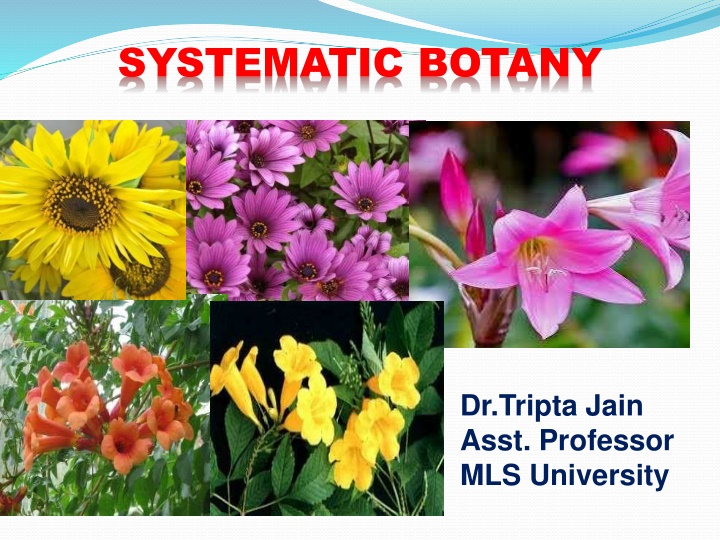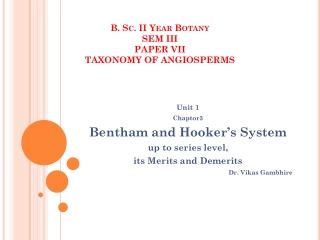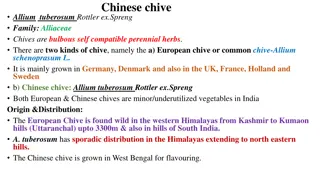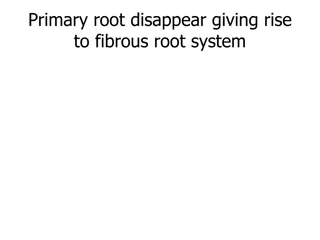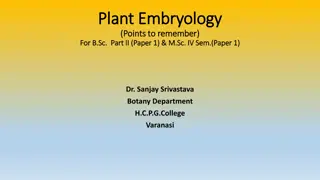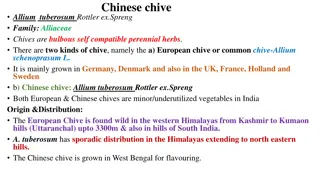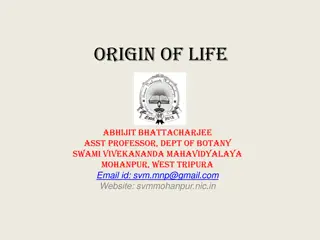Botany of Ocimum sanctum & Catharanthus roseus
In this detailed botanical study, explore the characteristics of Ocimum sanctum and Catharanthus roseus, including their habits, stems, leaves, inflorescence, flowers, and reproductive structures. Discover the unique features that define these perennial herbs and ornamental plants, from their distinct aromas to their intricate floral arrangements. Gain insights into the morphology and reproductive organs of these fascinating botanical specimens.
Download Presentation

Please find below an Image/Link to download the presentation.
The content on the website is provided AS IS for your information and personal use only. It may not be sold, licensed, or shared on other websites without obtaining consent from the author.If you encounter any issues during the download, it is possible that the publisher has removed the file from their server.
You are allowed to download the files provided on this website for personal or commercial use, subject to the condition that they are used lawfully. All files are the property of their respective owners.
The content on the website is provided AS IS for your information and personal use only. It may not be sold, licensed, or shared on other websites without obtaining consent from the author.
E N D
Presentation Transcript
SYSTEMATIC BOTANY Dr.Tripta Jain Asst. Professor MLS University
Ocimum sanctum, (Verna.-Tuisi): Habit: A perennial herb with typical aromatic smell. Stem: Erect, branched, quadrangular, somewhat woody, solid, branches covered with soft hairs. Leaf: Simple, opposite, short petioled, exstipulate, ovate, serrate, acute, gland dotted, unicostate reticulate venation.
Inflorescence: Verticillaster, 6-10 flowered whorls present, emitting fine smell. Flower: Pedicellate, bracteate, bracts small and caducous, hermaphrodite, zygomorphic, complete, purple, hypogynous. Calyx: 5 sepals, gamosepalous, bilabiate, petaloid (purple coloured), posterior lip broad and boat shaped, anterior lip with 4 small lobes possessing mucronate teeth, gland dotted, imbricate aestivation, inferior. Corolla: 5 petals, gamopetalous, bilabiate, corolla tube short, upper lip four lobed, lower lip large, imbricate aestivation, inferior.
Androecium: 4 stamens, polyandrous, didynamous, epipetalous, fifth posterior stamen completely suppressed, anthers bicelled, introrse, dorsifixed. Gynoecium: 2 carpels (bicarpellary), syncarpous, ovary bilocular in early stage but becomes tetralocular in later stage, ovary superior, four chambered, axile placentation, single ovule in each loculus, gynobasic style (i.e., it arises from the base of the ovary), stigma bifid. Fruit: Schizocarpic, carcerulus, 4 nutlets developed.
Botanical description of Catharanthus roseus Habit: Erect ever blooming ornamental plant with milky latex. Root: Branched tap root system Stem: Aerial, erect, cylindrical reddish green, glabrous and branched. Leaves: Usually simple, opposite decussate, exstipulate, subsessile, or petiolate, elliptic ovate, entire, mucronate, unicostate reticulate venation. Inflorescence: cymose, axillary pairs. Flower: Ebracteate, Ebracteolate, subsessile, complete, bisexual, heterochlamydeous, actinomorphic, hypogynous, pentamerous, rosy purple, white or pink.
Calyx: Sepals 5, slightly synsepalous, green showing valvate aestivation. Corolla: Petals 5, sympetalous, throat of corolla tube hairy forming a corona, twisted (hypocrateriform). Androecium: Stamens 5, apostemanous, epipetalous, inserted at the mouth of the corolla tube, filaments short, anthers sagittate, dithecous, dorsifixed, introse. Gynoecium: Bicarpellary, apocarpous, ovaries superior, unilocular, ovules many, placentation marginal, style simple, stigma hour-glass shaped. Two scaly nectaries are present one on the anterior and another on the posterior side of the ovary. Fruit: A pair of elongated follicles.
